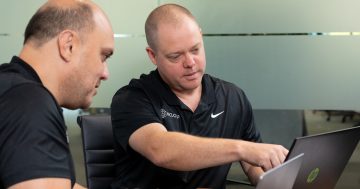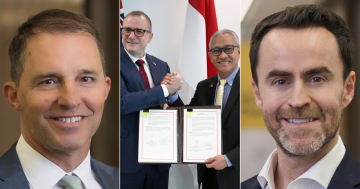Alice Uribe* says experts are predicting a mass exodus of financial planners in the next few years, in part as a result of damning findings by the banking Royal Commission.

Photo: Braden Hopkins
A mass exodus of financial planners in Australia over the next five years will put $900 billion of client wealth in play as the reality of tougher educational standards and the fallout from damning banking Royal Commission revelations set in.
The stunning shift in the industry is a key finding of a report by Adviser Ratings, which revealed 57 per cent of advisers, numbering 14,000, will seek to exit the sector on the back of what the 100-page report calls “significant disruption”.
Angus Woods, Managing Director of Adviser Ratings, a consumer group set up in the wake of the Future of Financial Advice (FOFA) reforms, said regulatory reforms that may come out of the Royal Commission’s focus on vertical integration — the pushing of own products by company-aligned advisers — would further fuel the exodus.
“The advice industry is in extraordinary flux,” he said.
“Consumer expectations are crystal clear that the advice industry must implement the necessary changes to achieve professionalism and earn the respect of the community.”
The Australian Securities and Investments Commission (ASIC) earlier this month put the financial advice sector on notice, laying out plans to speed up its investigations into wealth management firms and warning of a new era of more “intensive, dedicated” oversight.
In response to scandals that have been aired at the banking Royal Commission, the corporate regulator has also raised the spectre of banning grandfathered commissions — still a major component of financial advisers’ remuneration.
Further pressure is also being applied by a new code of ethics that advisers must adhere to in less than two years’ time.
This will be set by the recently installed Financial Adviser Standards and Ethics Authority.
Sitting alongside this is the requirement for planners to meet a range of new education and training standards.
Since 2015, 7,000 advisers have left the industry, according to the Adviser Ratings report, which incorporated internal data, Census data and the results of an online survey of more than 1,100 advisers.
There are currently 24,323 registered advisers, although many who are registered are not active in client-facing roles.
In excess of $200 billion in client money is expected to transition in the next 12 months, with $900 billion moving over in five years, according to the report.
More than 20 per cent of advisers also indicated they would consider putting their practices on the market over the coming year.
Mark Hoven, Chief Executive of the wealth division at Adviser Ratings, said he expected more than one-quarter of the $900 billion in transition to “leak into the pool of unadvised”.
“As we saw in the UK, the most likely to be impacted are those currently being served by the banking and aligned model, with advisers tending to service less affluent clients,” he said.
“There may be less motivation within the business to extend the necessary care to the client to transition to another practice or adviser.”
Australia is following the lead of the UK, which saw a 25 per cent collapse in adviser numbers on the back of the Government’s 2011–12 Retail Distribution Review, which recommended the abolition of commissions and increased minimum qualifications for advisers
Mr Hoven said the grim figures must be “countered with how fast the robo-solutions are coming along”.
“This represents a massive opportunity for technology providers with these funds needing some sort of servicing,” he said.
“The generational transfer of wealth will help these players as loyalty to an adviser, who has traditionally been focused on the ‘mum and dad’ of the household, will be impacted by the decision-making of their adult children.”
Paul Barrett, the former managing director of ANZ Banking Group’s global advice arm and now founder of financial advice network AZ NGA, said that Adviser Ratings’ finding of 14,000 advisers departing the Australian industry “might be a bit high”.
But he agreed there will be a change to the “look and feel” of what is deemed to be the “traditional adviser footprint”.
“I suspect the education piece will put a fine point on it … in regards to who is going to make the grade,” he said.
“There will be shrinkage, but I suspect that will be a temporary shrinkage.”
“You might find the industry will attract a new type of adviser and generational change in the adviser footprint in Australia is inevitable.”
“I see a recovery in due course.”
According to the Adviser Ratings, wealth management giants IOOF and AMP are at the most risk of losing advisers, with more than 1,200 planners leaving the big banks in the past three years.
At the same time, the establishment of self-licensed practices has driven a 33 per cent increase in licensees over the same period.
“The explosion of self-licensed practices is driving more open approved product lists, including a stunning growth in managed accounts,” said Mr Hoven.
“Invariably, there will be winners and losers as vendors scramble to change product and distribution strategies to stay ahead of the curve.”
One winner is investment platform Netwealth — it is deemed to be a standout supplier by advisers according to Adviser Ratings — which has capitalised on the endless flow of superannuation money that fuels the country’s wealth management sector.
Netwealth founder and joint managing director, Michael Heine debuted on the Australian Financial Review’s Rich List when the 2018 edition was published last Friday.
“The market dynamics are giving us tailwinds and advisers leaving the banks and the aligned networks provides us with the opportunity to win their business,” he said in February.
“Most of those advisers who will be looking at a new platform will almost certainly include Netwealth in their requests.”
“Whilst we can’t win all of them, we can certainly win our fair share.”
* Alice Uribe is Financial Services Writer for The Australian Financial Review in Sydney. She tweets at @AliceUribe1.
This article first appeared at www.afr.com.











